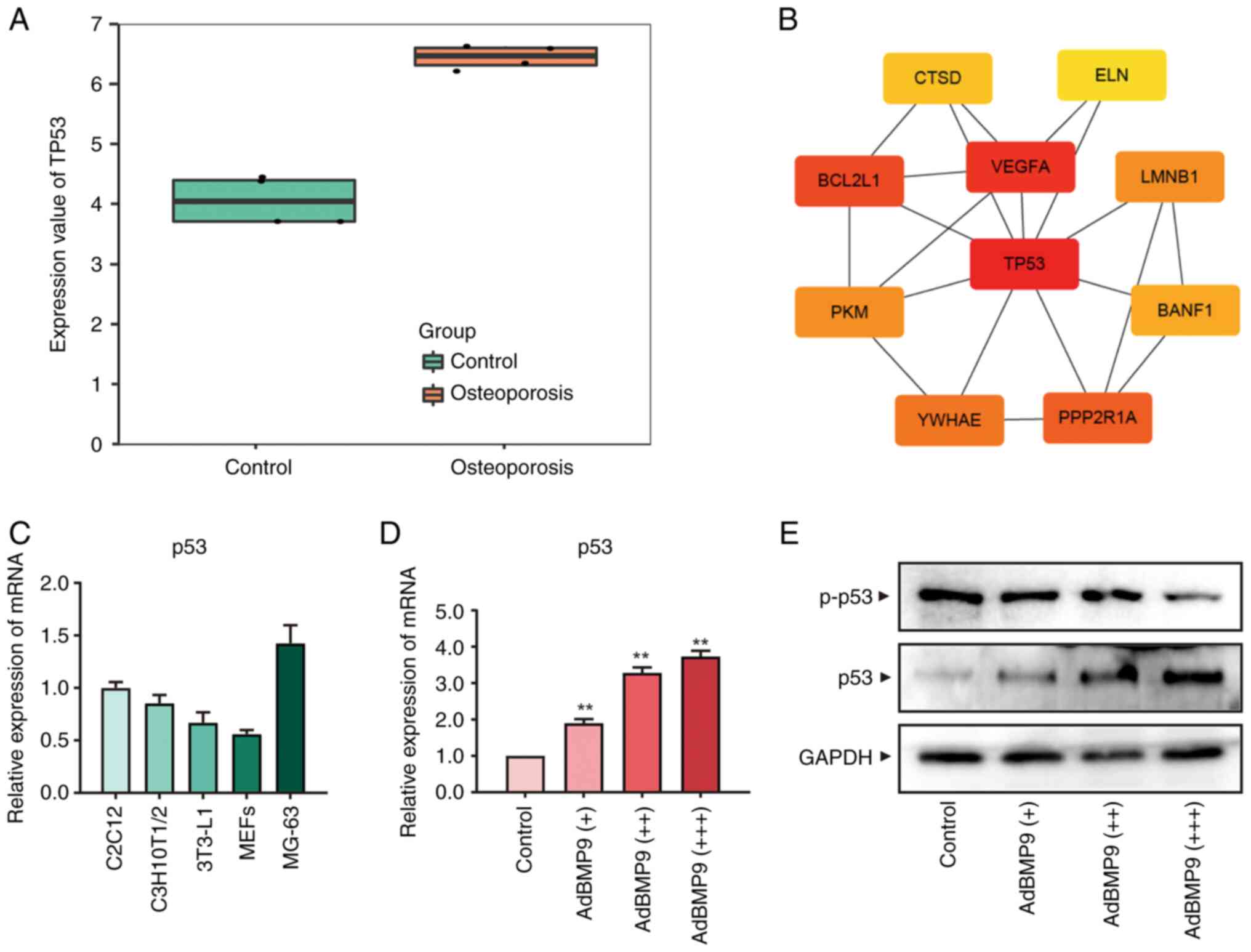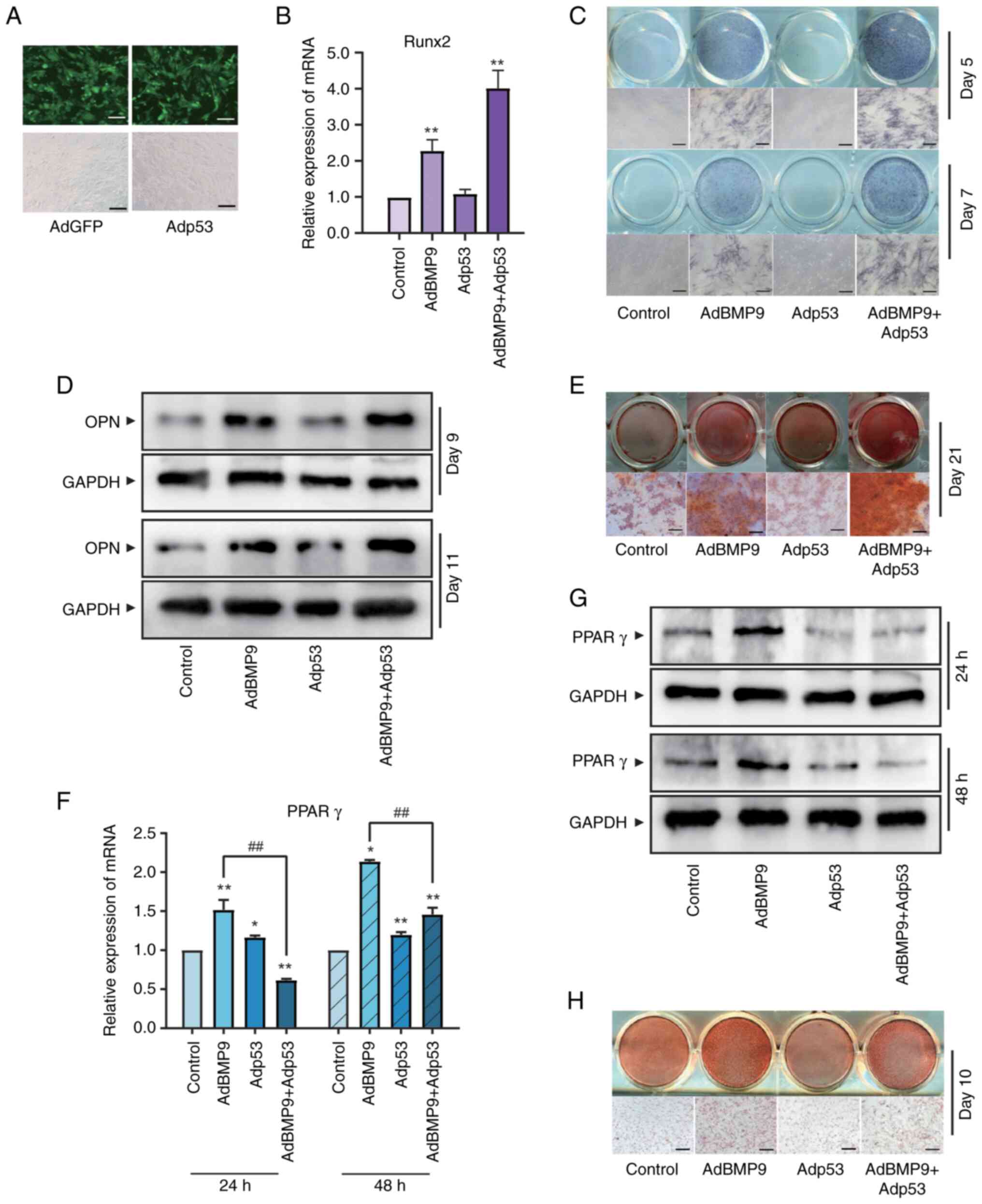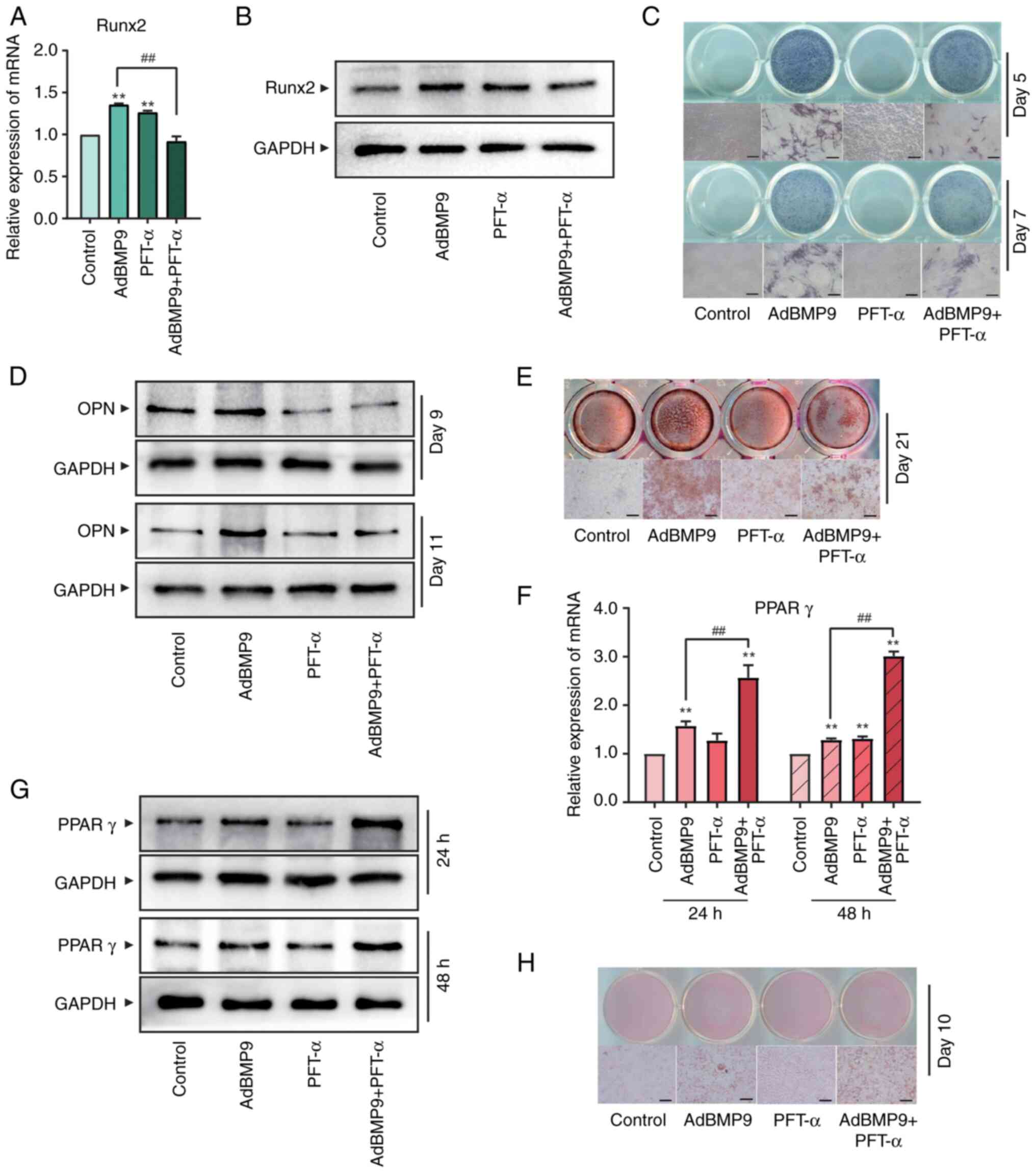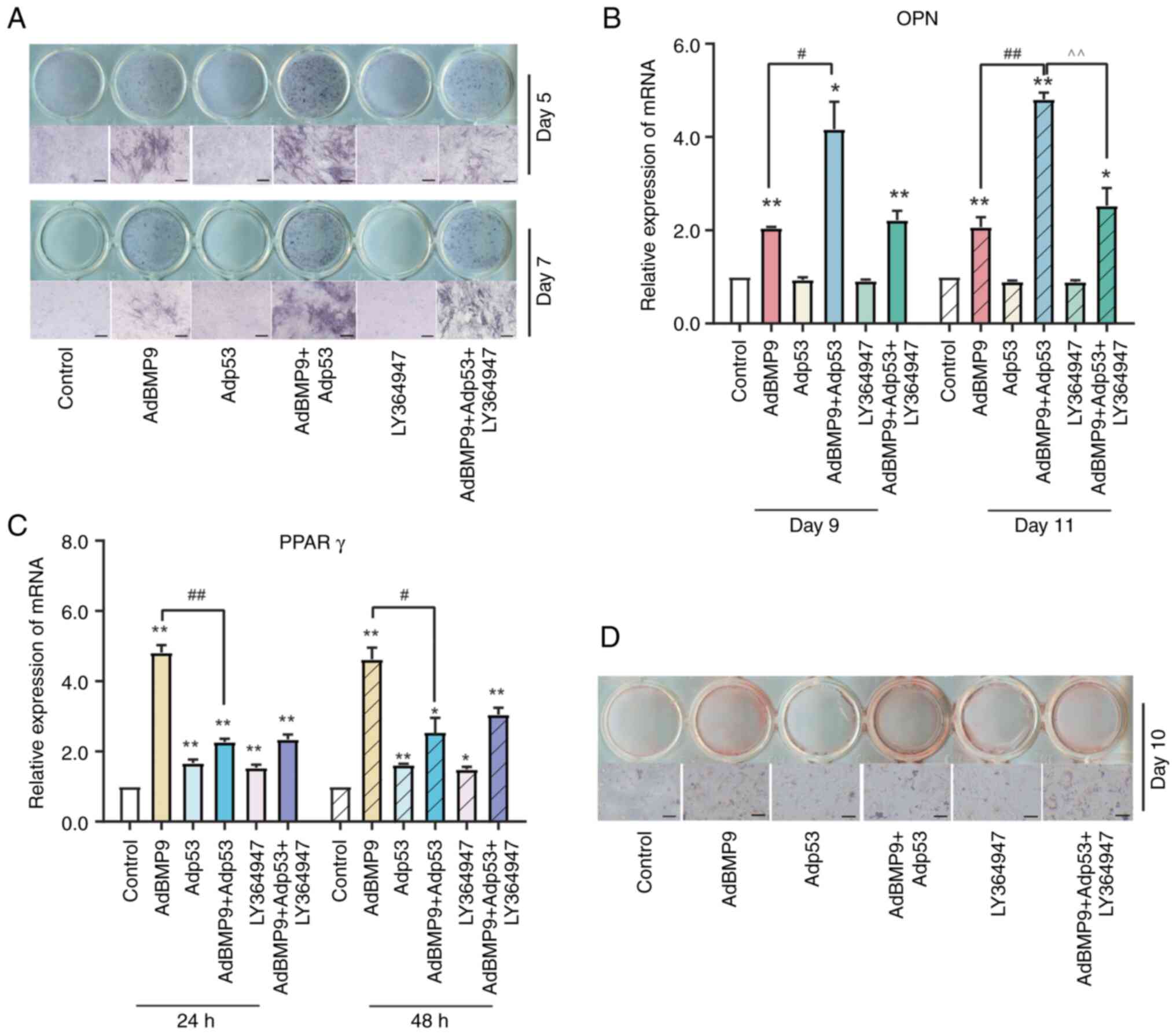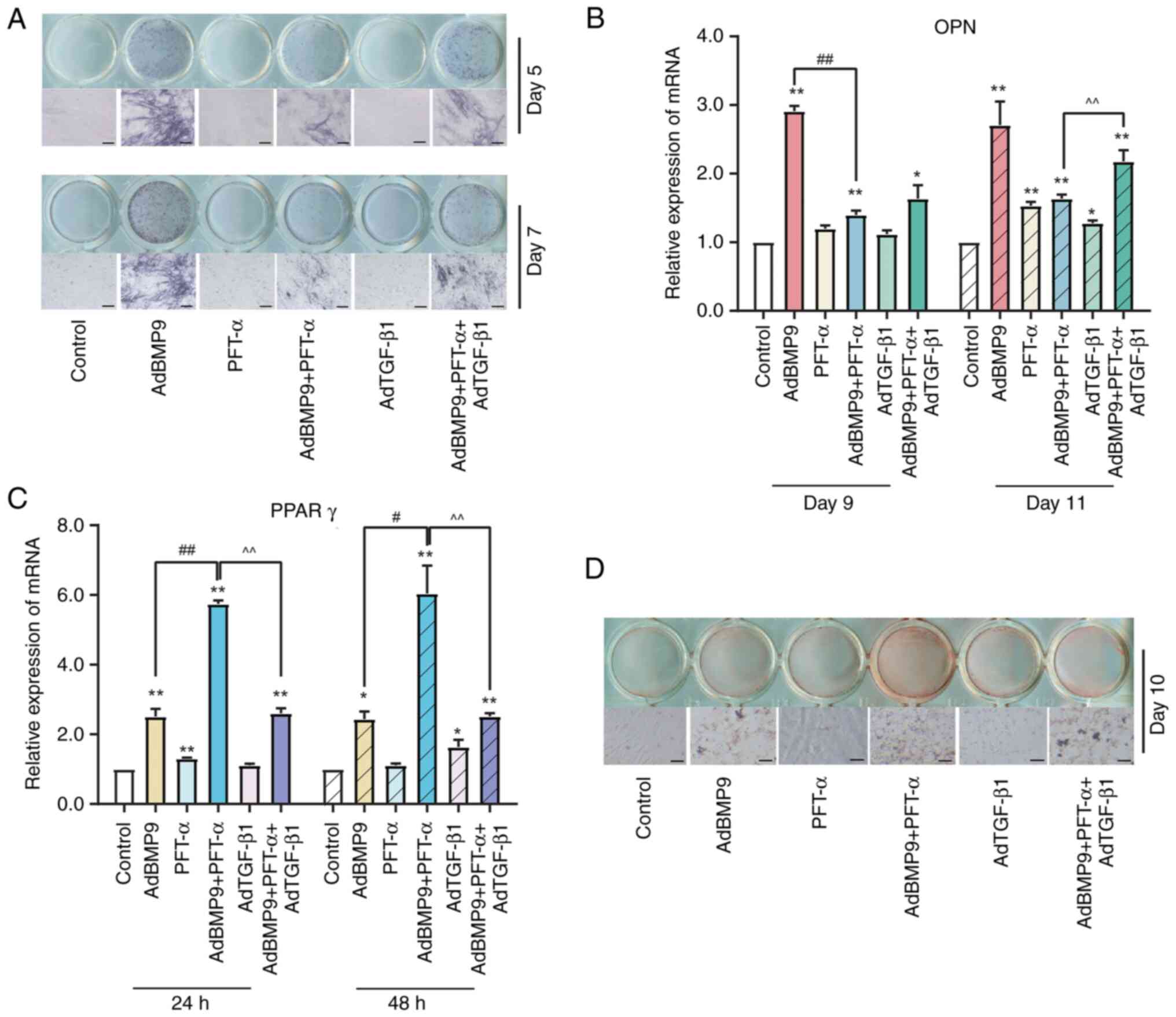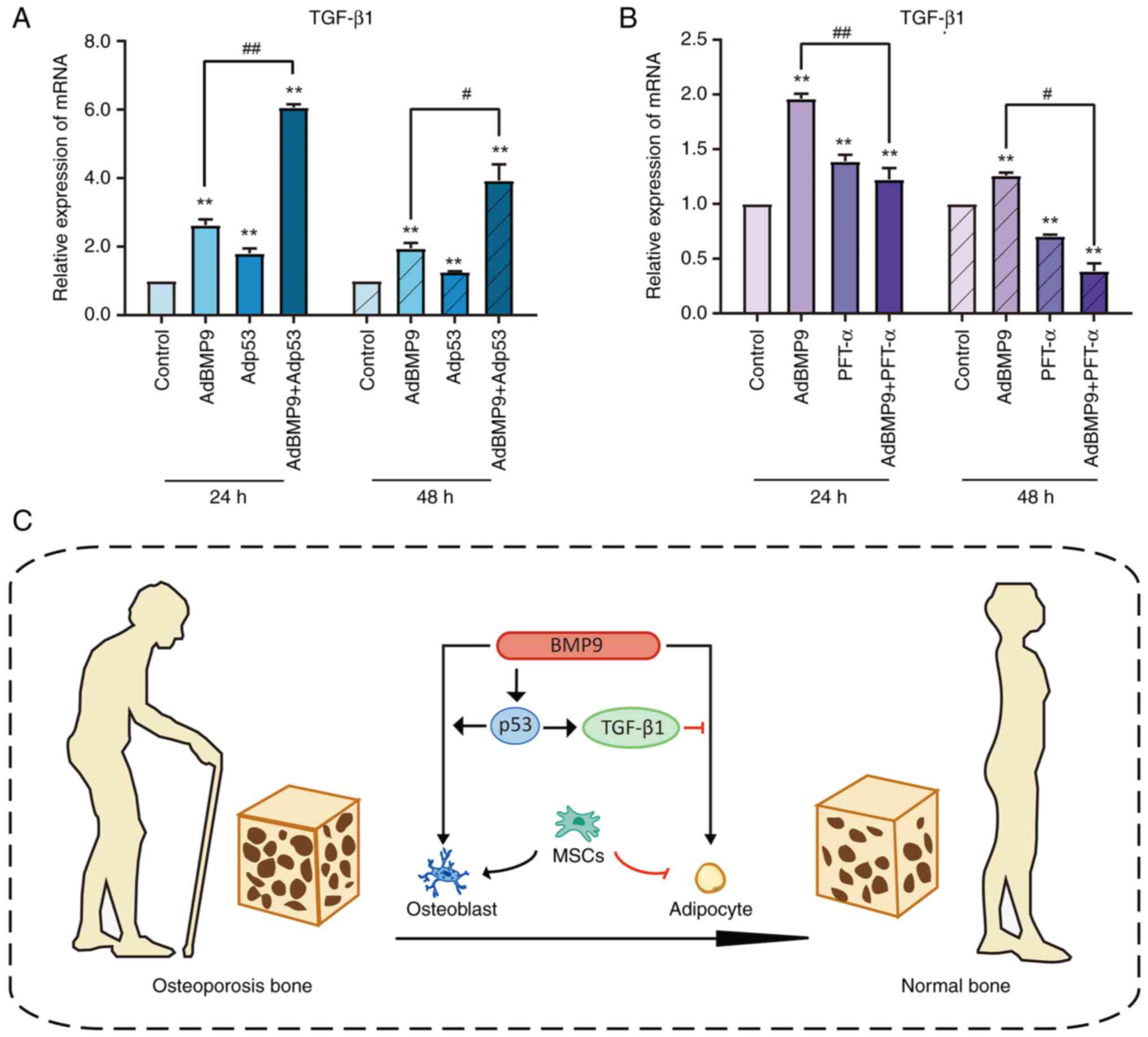|
1
|
Pinheiro MB, Oliveira J, Bauman A,
Fairhall N, Kwok W and Sherrington C: Evidence on physical activity
and osteoporosis prevention for people aged 65+ years: A systematic
review to inform the WHO guidelines on physical activity and
sedentary behavior. Int J Behav Nutr Phys Act.
17(150)2020.PubMed/NCBI View Article : Google Scholar
|
|
2
|
Yang TL, Shen H, Liu A, Dong SS, Zhang L,
Deng FY, Zhao Q and Deng HW: A road map for understanding molecular
and genetic determinants of osteoporosis. Nat Rev Endocrinol.
16:91–103. 2020.PubMed/NCBI View Article : Google Scholar
|
|
3
|
Sözen T, Özışık L and Başaran NÇ: An
overview and management of osteoporosis. Eur J Rheumatol. 4:46–56.
2017.PubMed/NCBI View Article : Google Scholar
|
|
4
|
Cheng C, Wentworth K and Shoback DM: New
frontiers in osteoporosis therapy. Ann Rev Med. 71:277–288.
2020.PubMed/NCBI View Article : Google Scholar
|
|
5
|
Shao J, Zhang W and Yang T: Using
mesenchymal stem cells as a therapy for bone regeneration and
repairing. Biol Res. 48:1–7. 2015.PubMed/NCBI View Article : Google Scholar
|
|
6
|
Lu LX, Zhang XF, Wang YY, Ortiz L, Mao X,
Jiang ZL, Xiao ZD and Huang NP: Effects of
hydroxyapatite-containing composite nanofibers on osteogenesis of
mesenchymal stem cells in vitro and bone regeneration in vivo. ACS
Appl Mater Interfaces. 5:319–330. 2013.PubMed/NCBI View Article : Google Scholar
|
|
7
|
Wu M, Chen G and Li YP: TGF-β and BMP
signaling in osteoblast, skeletal development, and bone formation,
homeostasis and disease. Bone Res. 4:1–21. 2016.PubMed/NCBI View Article : Google Scholar
|
|
8
|
Mostafa S, Pakvasa M, Coalson E, Zhu A,
Alverdy A, Castillo H, Fan J, Li A, Feng Y, Wu D, et al: The
wonders of BMP9: From mesenchymal stem cell differentiation,
angiogenesis, neurogenesis, tumorigenesis, and metabolism to
regenerative medicine. Genes Dis. 6:201–223. 2019.PubMed/NCBI View Article : Google Scholar
|
|
9
|
Wang Y, Ma C, Sun T and Ren L: Potential
roles of bone morphogenetic protein-9 in glucose and lipid
homeostasis. J Physiol Biochem. 76:503–512. 2020.PubMed/NCBI View Article : Google Scholar
|
|
10
|
Liu Y and Gu W: The complexity of
p53-mediated metabolic regulation in tumor suppression. Semin
Cancer Biol. 85:4–32. 2021.PubMed/NCBI View Article : Google Scholar
|
|
11
|
Lavin MF and Gueven N: The complexity of
p53 stabilization and activation. Cell Death Differ. 13:941–950.
2006.PubMed/NCBI View Article : Google Scholar
|
|
12
|
Liu Y, Tavana O and Gu W: p53
modifications: Exquisite decorations of the powerful guardian. J
Mol Cell Biol. 11:564–577. 2019.PubMed/NCBI View Article : Google Scholar
|
|
13
|
Vousden KH: Outcomes of p53
activation-spoilt for choice. J Cell Sci. 119:5015–5020.
2006.PubMed/NCBI View Article : Google Scholar
|
|
14
|
Huang Q, Liu M, Du X, Zhang R, Xue Y,
Zhang Y, Zhu W, Li D, Zhao A and Liu Y: Role of p53 in preadipocyte
differentiation. Cell Biol Int. 38:1384–1393. 2014.PubMed/NCBI View Article : Google Scholar
|
|
15
|
Jain AK, Allton K, Iacovino M, Mahen E,
Milczarek RJ, Zwaka TP, Kyba M and Barton MC: p53 regulates cell
cycle and microRNAs to promote differentiation of human embryonic
stem cells. PLoS Biol. 10(e1001268)2012.PubMed/NCBI View Article : Google Scholar
|
|
16
|
Molchadsky A, Shats I, Goldfinger N,
Pevsner-Fischer M, Olson M, Rinon A, Tzahor E, Lozano G, Zipori D,
Sarig R and Rotter V: p53 plays a role in mesenchymal
differentiation programs, in a cell fate dependent manner. PLoS
One. 3(e3707)2008.PubMed/NCBI View Article : Google Scholar
|
|
17
|
Mao X, Li X, Hu W, Hao S, Yuan Y, Guan L
and Guo B: Downregulated brain and muscle aryl hydrocarbon receptor
nuclear translocator-like protein-1 inhibits osteogenesis of BMSCs
through p53 in type 2 diabetes mellitus. Biol Open.
9(bio051482)2020.PubMed/NCBI View Article : Google Scholar
|
|
18
|
Hüttinger-Kirchhof N, Cam H, Griesmann H,
Hofmann L, Beitzinger M and Stiewe T: The p53 family inhibitor
ΔNp73 interferes with multiple developmental programs. Cell Death
Differ. 13:174–177. 2006.PubMed/NCBI View Article : Google Scholar
|
|
19
|
Velletri T, Huang Y, Wang Y, Li Q, Hu M,
Xie N, Yang Q, Chen X, Chen Q, Shou P, et al: Loss of p53 in
mesenchymal stem cells promotes alteration of bone remodeling
through negative regulation of osteoprotegerin. Cell Death Differ.
28:156–169. 2021.PubMed/NCBI View Article : Google Scholar
|
|
20
|
Wang X, Kua HY, Hu Y, Guo K, Zeng Q, Wu Q,
Ng HH, Karsenty G, de Crombrugghe B, Yeh J and Li B: p53 functions
as a negative regulator of osteoblastogenesis, osteoblast-dependent
osteoclastogenesis, and bone remodeling. J Cell Biol. 172:115–125.
2006.PubMed/NCBI View Article : Google Scholar
|
|
21
|
Shea CM, Edgar CM, Einhorn TA and
Gerstenfeld LC: BMP treatment of C3H10T1/2 mesenchymal stem cells
induces both chondrogenesis and osteogenesis. J Cell Biochem.
90:1112–1127. 2003.PubMed/NCBI View Article : Google Scholar
|
|
22
|
Wu N, Zhao Y, Yin Y, Zhang Y and Luo J:
Identification and analysis of type II TGF-β receptors in
BMP-9-induced osteogenic differentiation of C3H10T1/2 mesenchymal
stem cells. Acta Biochim Biophys Sin (Shanghai). 42:699–708.
2010.PubMed/NCBI View Article : Google Scholar
|
|
23
|
Bruderer M, Richards RG, Alini M and
Stoddart MJ: Role and regulation of RUNX2 in osteogenesis. Eur Cell
Mater. 28:269–286. 2014.PubMed/NCBI View Article : Google Scholar
|
|
24
|
Sharma U, Pal D and Prasad R: Alkaline
phosphatase: An overview. Indian J Clin Biochem. 29:269–278.
2014.PubMed/NCBI View Article : Google Scholar
|
|
25
|
Icer MA and Gezmen-Karadag M: The multiple
functions and mechanisms of osteopontin. Clin Biochem. 59:17–24.
2018.PubMed/NCBI View Article : Google Scholar
|
|
26
|
Springsteen G and Wang B: Alizarin Red S
as a general optical reporter for studying the binding of boronic
acids with carbohydrates. Chem Commun (Camb). 17:1608–1609.
2001.PubMed/NCBI View
Article : Google Scholar
|
|
27
|
Molchadsky A, Ezra O, Amendola PG, Krantz
D, Kogan-Sakin I, Buganim Y, Rivlin N, Goldfinger N, Folgiero Y,
Falcioni R, et al: p53 is required for brown adipogenic
differentiation and has a protective role against diet-induced
obesity. Cell Death Differ. 20:774–783. 2013.PubMed/NCBI View Article : Google Scholar
|
|
28
|
Tontonoz P and Spiegelman BM: Fat and
beyond: The diverse biology of PPARgamma. Annu Rev Biochem.
77:289–312. 2008.PubMed/NCBI View Article : Google Scholar
|
|
29
|
Mehlem A, Hagberg CE, Muhl L, Eriksson U
and Falkevall A: Imaging of neutral lipids by oil red O for
analyzing the metabolic status in health and disease. Nat Protoc.
8:1149–1154. 2013.PubMed/NCBI View Article : Google Scholar
|
|
30
|
Misra UK and Pizzo SV: PFT-alpha inhibits
antibody-induced activation of p53 and pro-apoptotic signaling in
1-LN prostate cancer cells. Biochem Biophys Res Commun.
391:272–276. 2010.PubMed/NCBI View Article : Google Scholar
|
|
31
|
Li XL, Liu YB, Ma EG, Shen WX, Li H and
Zhang YN: Synergistic effect of BMP9 and TGF-β in the proliferation
and differentiation of osteoblasts. Genet Mol Res. 14:7605–7615.
2015.PubMed/NCBI View Article : Google Scholar
|
|
32
|
Deng Y, Li L, Zhu JH, Li PP, Deng YX, Luo
HH, Yang YY, He BC and Su Y: COX-2 promotes the osteogenic
potential of BMP9 through TGF-β1/p38 signaling in mesenchymal stem
cells. Aging (Albany NY). 13:11336–11351. 2021.PubMed/NCBI View Article : Google Scholar
|
|
33
|
Karkampouna S, Goumans MJ, Dijke PT,
Dooley S and Julio MK: Inhibition of TGFβ type I receptor activity
facilitates liver regeneration upon acute CCl4 intoxication in
mice. Arch Toxicol. 90:347–357. 2016.PubMed/NCBI View Article : Google Scholar
|
|
34
|
Hasegawa T and Ishii M: Visualizing bone
tissue in homeostatic and pathological conditions. Proc Jpn Acad
Ser B Phys Biol Sci. 96:43–49. 2020.PubMed/NCBI View Article : Google Scholar
|
|
35
|
Manzini BM, Machado LMR, Noritomi PY and
DA Silva JVL: Advances in bone tissue engineering: A fundamental
review. J Biosci. 46(17)2021.PubMed/NCBI
|
|
36
|
Lamplot JD, Qin J, Nan G, Wang J, Liu X,
Yin L, Tomal J, Li R, Shui W, Zhang H, et al: BMP9 signaling in
stem cell differentiation and osteogenesis. Am J Stem Cells.
2:1–21. 2013.PubMed/NCBI
|
|
37
|
Wang H, Hu Y, He F, Li L, Li PP, Deng Y,
Li FS, Wu K and He BC: All-trans retinoic acid and COX-2 cross-talk
to regulate BMP9-induced osteogenic differentiation via
Wnt/β-catenin in mesenchymal stem cells. Biomed Pharmacother.
118(109279)2019.PubMed/NCBI View Article : Google Scholar
|
|
38
|
Zheng W, Gu X, Sun X, Wu Q and Dan H: FAK
mediates BMP9-induced osteogenic differentiation via Wnt and MAPK
signaling pathway in synovial mesenchymal stem cells. Artif Cells
Nanomed Biotechnol. 47:2641–2649. 2019.PubMed/NCBI View Article : Google Scholar
|
|
39
|
Liu Y and Gu W: p53 in ferroptosis
regulation: The new weapon for the old guardian. Cell Death Differ.
29:895–910. 2022.PubMed/NCBI View Article : Google Scholar
|
|
40
|
Hafner A, Bulyk ML, Jambhekar A and Lahav
G: The multiple mechanisms that regulate p53 activity and cell
fate. Nat Rev Mol Cell Biol. 20:199–210. 2019.PubMed/NCBI View Article : Google Scholar
|
|
41
|
Li B, Zhang YW, Liu X, Ma L and Yang JX:
Molecular mechanisms of intermuscular bone development in fish: A
review. Zool Res. 42:362–376. 2021.PubMed/NCBI View Article : Google Scholar
|
|
42
|
Boregowda SV, Krishnappa V, Strivelli J,
Haga CL, Booker CN and Phinney DG: Basal p53 expression is
indispensable for mesenchymal stem cell integrity. Cell Death
Differ. 25:679–692. 2018.PubMed/NCBI View Article : Google Scholar
|
|
43
|
Yue R, Zhou B, Shimada IS, Zhao Z and
Morrison SJ: Leptin receptor promotes adipogenesis and reduces
osteogenesis by regulating mesenchymal stromal cells in adult bone
marrow. Cell Stem Cell. 18:782–796. 2016.PubMed/NCBI View Article : Google Scholar
|
|
44
|
Rosen ED and MacDougald OA: Adipocyte
differentiation from the inside out. Nat Rev Mol Cell Biol.
7:885–896. 2006.PubMed/NCBI View Article : Google Scholar
|
|
45
|
Trivedi T, Pagnotti GM, Guise TA and
Mohammad KS: The role of TGF-β in bone metastases. Biomolecules.
11(1643)2021.PubMed/NCBI View Article : Google Scholar
|
|
46
|
Zou ML, Chen ZH, Teng YY, Liu SY, Jia Y,
Zhang KW, Sun ZL, Wu JJ, Yuan ZD, Feng Y, et al: The smad dependent
TGF-β and BMP signaling pathway in bone remodeling and therapies.
Front Mol Biosci. 8(593310)2021.PubMed/NCBI View Article : Google Scholar
|
|
47
|
Tang N, Song WX, Luo J, Luo X, Chen J,
Sharff KA, Bi Y, He BC, Huang JY, Zhu GH, et al: BMP9-induced
osteogenic differentiation of mesenchymal progenitors requires
functional canonical Wnt/β-catenin signalling. J Cell Mol Med.
13:2448–2464. 2009.PubMed/NCBI View Article : Google Scholar
|
|
48
|
Huang E, Bi Y, Jiang W, Luo X, Yang K, Gao
JL, Gao Y, Luo Q, Shi Q, Kim SH, et al: Conditionally immortalized
mouse embryonic fibroblasts retain proliferative activity without
compromising multipotent differentiation potential. PLoS One.
7(e32428)2012.PubMed/NCBI View Article : Google Scholar
|















